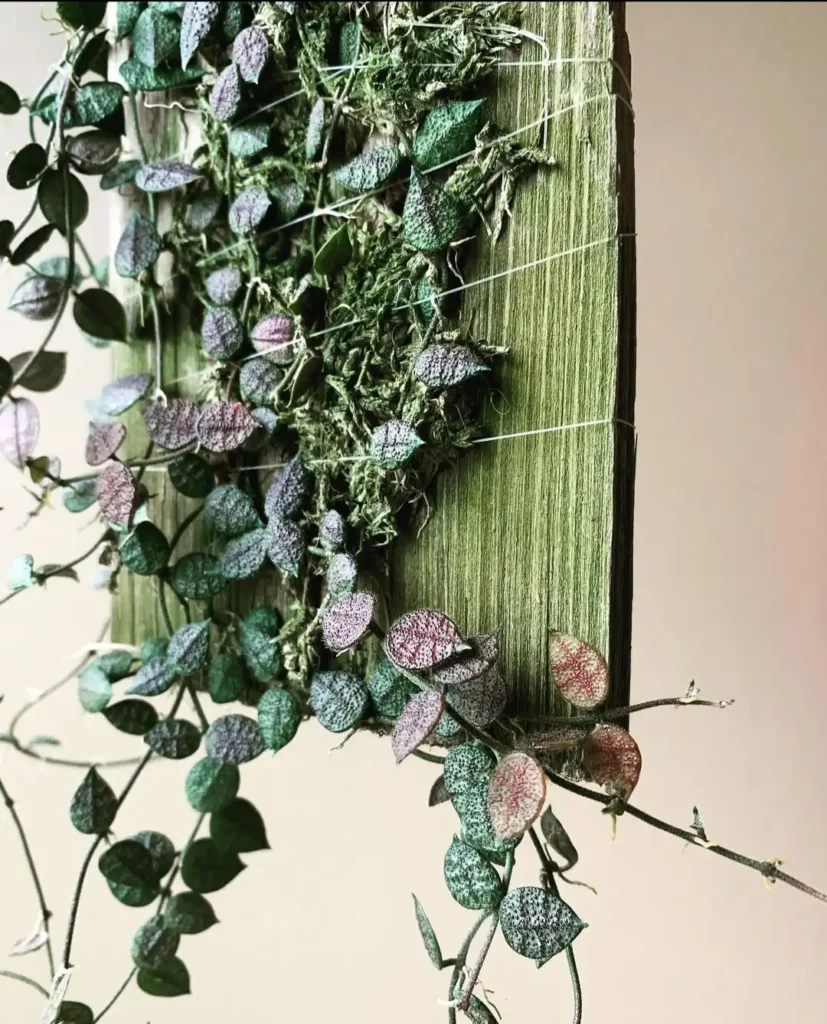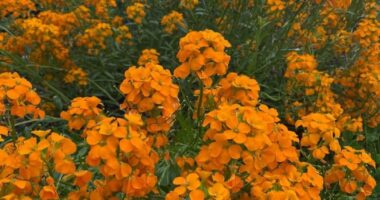In the realm of indoor gardening, the allure of unique and captivating plant species is undeniable. Dischidia Hirsuta Red Leaf, with its vibrant foliage and intriguing characteristics, has earned its place as a beloved choice among plant enthusiasts. In this comprehensive article, we will delve into the captivating world of Dischidia Hirsuta Red Leaf, exploring its distinct features, care requirements, propagation methods, and more. So, let’s embark on this green journey and discover what makes Dischidia Hirsuta Red Leaf a must-have addition to your indoor garden.
What Is Dischidia Hirsuta Red Leaf?

Dischidia Hirsuta, commonly known as the “Ant Plant,” is a member of the Apocynaceae family. Native to Southeast Asia, this unique plant has gained popularity for its remarkable foliage. The name “Ant Plant” is attributed to its symbiotic relationship with ants, making it a fascinating addition to any plant collection.
- The Red Leaf Phenomenon
One of the most captivating features of Dischidia Hirsuta is its striking red leaves. These leaves, characterized by their vibrant crimson hue, set this plant apart from its green counterparts. But what causes this stunning red coloration?
Understanding The Red Leaf Phenomenon / what Are The Red Leaves on Dischidia Hirsuta?

- Pigmentation and Light Requirements
The red coloration of Dischidia Hirsuta’s leaves is a result of pigmentation. As a succulent epiphyte, this plant thrives in indirect sunlight. The intensity of light plays a crucial role in determining the depth of red in its leaves. More light leads to richer red tones, while less light results in a milder hue.

- A Protective Adaptation
In its natural habitat, Dischidia Hirsuta forms symbiotic relationships with ants. The red leaves serve as a protective adaptation, deterring herbivores and safeguarding the plant from potential threats.
How to Grow Dischidia Hirsuta Red Leaf

Growing and nurturing Dischidia Hirsuta Red Leaf, with its vibrant crimson foliage and unique characteristics, can be a rewarding experience for indoor gardening enthusiasts. This comprehensive guide will walk you through the steps to successfully cultivate and care for this captivating plant.
- Selecting the Right Pot
Choosing the right pot is the first step in growing Dischidia Hirsuta Red Leaf. Opt for a container with good drainage holes to prevent waterlogging. The pot size should allow for some room for growth but not be excessively large, as this can retain too much moisture.
- Choosing the Ideal Potting Mix
Use a well-draining potting mix that replicates the plant’s natural habitat. A mix designed for epiphytic or succulent plants works well. Alternatively, you can create your mix by combining peat moss, perlite, and orchid bark in equal parts.
- Placement and Light
Dischidia Hirsuta Red Leaf thrives in bright, indirect sunlight. Here’s how to provide the ideal lighting conditions:
- Indirect Sunlight: Place your plant in a location where it receives bright, filtered sunlight. Avoid direct exposure to intense sunlight, which can damage the leaves.
- North or East-Facing Windows: These windows often offer the right balance of brightness without direct sun exposure.
- Supplement with Grow Lights: If natural light is limited, consider using fluorescent grow lights to provide the necessary illumination.
- Temperature Requirements
Maintain a warm environment for your Dischidia Hirsuta Red Leaf, mimicking its native tropical conditions:
- Temperature Range: Keep your indoor environment consistently between 70-85°F (21-29°C). Avoid exposing the plant to cold drafts, which can stress it.
- Winter Care: During colder months, protect the plant from drafts and provide additional warmth if needed to maintain a stable temperature.
- Humidity Management
Moderate humidity levels are essential for the well-being of Dischidia Hirsuta Red Leaf:
- Misting: Regularly mist the plant with water to increase humidity around it. Aim for humidity levels between 50-60% to ensure optimal growth.
- Humidity Tray: Place a tray filled with water and pebbles near the plant to create a humid microenvironment.
- Watering Wisely
Proper watering is crucial for your plant’s health:
- Check Soil Moisture: Before watering, check the top inch of soil. Water only when it feels dry to the touch. Overwatering can lead to root rot, a common issue with this plant.
- Well-Draining Soil: Ensure that the potting mix is well-draining to prevent excess moisture retention.
- Adjust for Conditions: Be mindful of temperature and humidity variations, as they can influence your plant’s watering needs. Adapt your watering frequency accordingly.
- Fertilization for Growth
To promote healthy growth and the development of vibrant red leaves, follow these fertilization guidelines:
- Balanced Fertilizer: During the growing season (typically spring and summer), use a balanced liquid fertilizer formulated for houseplants. Follow the manufacturer’s instructions for dilution and frequency.
- Reduce Fertilization: As fall and winter approach and the plant’s growth slows, reduce or suspend fertilization to allow the plant to rest.
- Pruning for Maintenance
Pruning helps maintain the plant’s appearance and encourage bushier growth:
- Addressing Leggy Growth: Trim back any leggy or excessively long stems to promote a more compact and aesthetically pleasing appearance. Pruning also helps redistribute the plant’s energy for healthier growth.
- Repotting When Necessary
As your Dischidia Hirsuta Red Leaf grows, it may outgrow its current pot:
- Check the Roots: Monitor the roots, and when they start to fill the pot and become root-bound, it’s time to consider repotting. This typically occurs every couple of years.
- Repot with Care: When repotting, handle the plant and its roots gently to avoid damage. Choose a slightly larger pot with good drainage to accommodate its growth.
By following these comprehensive guidelines, you can successfully grow and care for Dischidia Hirsuta Red Leaf in your indoor garden, ensuring it thrives and displays its vibrant red leaves proudly.
How to Take Care of Dischidia Hirsuta Red Leaf?

Dischidia Hirsuta Red Leaf, with its captivating red foliage and unique characteristics, is a plant that demands attention and care to thrive. In this comprehensive guide, we will delve into the nuanced aspects of caring for this distinctive plant, providing you with a deep understanding of its requirements and ensuring it flourishes in your indoor garden.
- The Crucial Role of Light
Light is paramount for the well-being of Dischidia Hirsuta Red Leaf, as it directly impacts its growth and the vibrancy of its red leaves. Here’s an in-depth look at how to provide the right light conditions:
- Indirect Sunlight: To mimic its natural habitat, place your plant where it receives bright, indirect sunlight. This means positioning it away from direct exposure to intense sunlight, which could scorch its delicate leaves.
- Ideal Window Placement: North or east-facing windows often offer the perfect balance of brightness without direct rays. Observe how your plant responds to its location and adjust accordingly.
- Artificial Lighting: If natural light is insufficient, consider supplementing with fluorescent grow lights. These lights can provide the necessary intensity and spectrum for optimal growth.
- Temperature: Emulating Tropical Climates
Dischidia Hirsuta Red Leaf hails from Southeast Asia, where it thrives in warm, tropical conditions. Here’s how you can create a suitable temperature environment:
- Temperature Range: Maintain a consistent temperature between 70-85°F (21-29°C). Avoid exposing the plant to cold drafts, as sudden temperature fluctuations can stress it.
- Winter Care: During colder months, protect your plant from drafts and provide additional warmth if your indoor environment becomes cooler. Consistency in temperature is key to its well-being.
- The Importance of Humidity
Moderate humidity levels are vital for Dischidia Hirsuta Red Leaf. Creating a humid microenvironment can significantly enhance its health:
- Misting: Regularly misting the plant with water increases the humidity around it. Aim to maintain humidity levels between 50-60% to ensure it thrives.
- Humidity Tray: Another effective method is placing a tray filled with water and pebbles near the plant. As the water evaporates, it creates a humid zone around the plant, replicating its native conditions.
- Watering Strategies: Striking the Right Balance
Watering is a crucial aspect of caring for your Dischidia Hirsuta Red Leaf, and finding the right balance is essential:
- Checking Soil Moisture: Before watering, check the top inch of soil. Water only when it feels dry to the touch. Overwatering can lead to root rot, a common issue with this plant.
- Well-Draining Soil: Ensure that you use a well-draining potting mix. This prevents excess moisture from accumulating around the roots.
- Adjusting for Conditions: Understand that factors like temperature and humidity can influence your plant’s watering needs. Pay close attention and adapt your watering frequency accordingly.
- Fertilization: Nourishing for Growth
To promote healthy growth and the development of its striking red leaves, follow these fertilization guidelines:
- Balanced Fertilizer: During the growing season, typically in spring and summer, use a balanced liquid fertilizer specifically designed for houseplants. Follow the manufacturer’s instructions regarding dilution and frequency.
- Reduced Fertilization: As fall and winter approach and the plant’s growth slows, reduce or suspend fertilization. Allowing the plant to rest during this period is beneficial.
- Pruning: Shaping and Maintaining
Pruning is not only about aesthetics but also plays a significant role in maintaining the health and vigor of your Dischidia Hirsuta Red Leaf:
- Addressing Leggy Growth: Trim back any leggy or excessively long stems to encourage a more compact and aesthetically pleasing appearance. Pruning also helps redistribute the plant’s energy for healthier growth.
- Repotting: When and How
As your plant grows, it may eventually outgrow its current pot. Here’s what you need to know about repotting:
- Check the Roots: Monitor the roots of your plant. If they start to fill the pot and become root-bound, it’s time to consider repotting. This usually happens every couple of years.
- Repotting Process: When it’s time to repot, handle the plant and its roots with care to prevent damage. Choose a slightly larger pot with good drainage to accommodate its growth.
- Troubleshooting Common Issues
Understanding and addressing potential problems is crucial for maintaining your Dischidia Hirsuta Red Leaf in peak condition:
- Leaf Dropping: If your plant drops leaves, it may be due to inadequate light or overwatering. Assess its current conditions and make adjustments accordingly. Increasing the light or adjusting your watering routine can often resolve this issue.
- Pests: Keep a vigilant eye out for common pests like aphids and mealybugs, which can affect Dischidia Hirsuta. If you notice an infestation, promptly treat your plant with neem oil or insecticidal soap to eliminate the pests.
The Benefits of Dischidia Hirsuta Red Leaf

Dischidia Hirsuta Red Leaf, with its stunning crimson foliage and captivating appearance, offers more than just visual appeal. This unique plant brings a range of benefits to your indoor garden and living spaces. Let’s explore the advantages of having Dischidia Hirsuta Red Leaf as part of your botanical collection.
- Aesthetic Beauty
The most obvious benefit of Dischidia Hirsuta Red Leaf is its breathtaking appearance. The vibrant red leaves stand out among other plants, adding a pop of color and elegance to your home or office. Its unique coloration is a conversation starter and a focal point in any room.
- Air Purification
Like many houseplants, Dischidia Hirsuta Red Leaf contributes to air purification. It absorbs carbon dioxide and releases oxygen during photosynthesis, improving the air quality in your living space. Cleaner air can lead to better overall health and well-being.
- Humidity Regulation
This plant plays a role in maintaining indoor humidity levels. Through transpiration, it releases moisture into the air, increasing the humidity in its immediate surroundings. This can be especially beneficial in dry indoor environments, as adequate humidity is essential for human comfort and respiratory health.
- Symbiotic Relationship with Ants
Dischidia Hirsuta Red Leaf is renowned for its symbiotic relationship with ants. These tiny insects find shelter and sustenance within the hollow leaves of the plant. In return, they provide protection against potential threats. Observing this unique interaction can be a fascinating and educational experience, making it an ideal addition for those interested in the natural world.
- Low Maintenance
Despite its striking appearance, Dischidia Hirsuta Red Leaf is relatively low-maintenance. It doesn’t require frequent watering, and its care requirements are straightforward. This makes it an excellent choice for both experienced plant enthusiasts and beginners looking to expand their indoor garden.
- Easy Propagation
If you wish to share the beauty of Dischidia Hirsuta Red Leaf with friends and family, it’s relatively easy to propagate. Stem cuttings and layering are common propagation methods, allowing you to create new plants from the parent plant with minimal effort.
- Stress Reduction
Indoor gardening, including caring for Dischidia Hirsuta Red Leaf, has been shown to reduce stress and promote relaxation. The act of tending to plants can be therapeutic, providing a sense of accomplishment and tranquility.
- Educational Value
Having Dischidia Hirsuta Red Leaf in your indoor garden provides an opportunity for learning and education, especially if you have children or are passionate about botany. You can study its growth patterns, observe the ant interactions, and gain a deeper understanding of plant ecosystems.
- Unique Collection Addition
For plant enthusiasts and collectors, Dischidia Hirsuta Red Leaf is a unique addition to your botanical assortment. Its distinct characteristics and vivid coloration make it a standout choice in any collection, adding diversity and charm to your indoor garden.
Dischidia Hirsuta Varieties and The Ant Connection

Now that we’ve covered the basics, let’s take a deeper dive into the fascinating world of Dischidia Hirsuta Red Leaf.
While the red-leafed variety is the most popular, it’s worth noting that there are other intriguing variations of Dischidia Hirsuta, each with its unique characteristics. Some display different leaf shapes, sizes, and colorations, making them excellent additions to a diverse plant collection.
The symbiotic relationship between Dischidia Hirsuta and ants is a true marvel of nature. These tiny creatures find shelter and sustenance within the plant’s hollow leaves, while in return, they offer protection from potential threats. Observing this interaction in your indoor garden can be a truly captivating experience.
- Seasonal Changes
Dischidia Hirsuta, like many plants, goes through seasonal changes. During the growing season, you can expect more active growth and, consequently, more vibrant red leaves. Understanding these seasonal fluctuations can help you provide the best care for your plant year-round.
The Beauty of Red Leaf Succulents
While Dischidia Hirsuta Red Leaf is undoubtedly captivating, it’s just one example of red-leafed succulents. Exploring the world of red-leafed succulents can lead you to discover other stunning species like Echeveria ‘Red Prince,’ Graptoveria ‘Fred Ives,’ and Sedum ‘Red Carpet.’ Each of these succulents boasts its unique charm and care requirements.
Conclusion
In the realm of indoor gardening, Dischidia Hirsuta Red Leaf stands out as a true gem. Its captivating red leaves, unique characteristics, and straightforward care requirements make it a delightful addition to any plant collection. So, whether you’re a seasoned green thumb or just starting your gardening journey, consider inviting the beauty of Dischidia Hirsuta Red Leaf into your home.
FAQs
Is Dischidia Hirsuta Red Leaf suitable for beginners?
Absolutely! Its easy care requirements make it an excellent choice for novice gardeners.
How can I encourage more vibrant red leaf coloration?
Ensure your plant receives ample indirect sunlight for the best results.
Can I keep Dischidia Hirsuta Red Leaf outdoors?
While it can thrive outdoors in warm climates, it’s primarily an indoor plant for most regions.
Are there any specific humidity requirements?
Maintain humidity levels around 50-60% by misting the plant or using a humidity tray.
What’s the significance of the plant’s symbiotic relationship with ants?
This relationship benefits both the plant and ants. The plant provides shelter and food, while ants offer protection from herbivores and pests.




